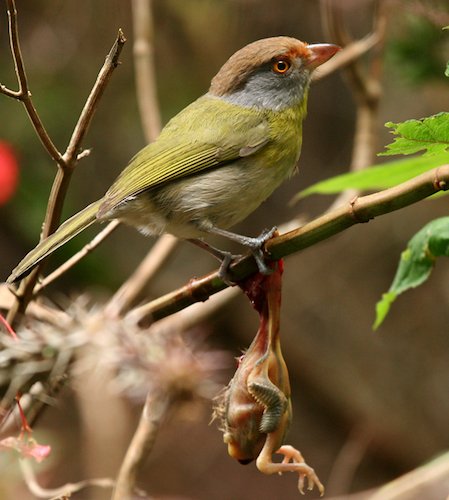State of Tocantins

Birding Tocantins
Tocantins is one of the states of Brazil. The state was formed in 1988 out of the northern part of Goiás, and construction began on the capital, Palmas, in 1989, in contrast to most of the other cities in the state which date back to Portuguese colonial period. It is the newest Brazilian State and, because it is still very young, it is developing slowly, building on its most important resources: the rivers Araguaia and Tocantins, the largest hydro basin entirely inside Brazilian territory. Because it is in the central zone of the country, it has characteristics of the Amazon, but also has open pastures. The Ilha do Bananal, in the southwest of the State, is the largest fluvial isle in the world. There is the National Park of Araguaia, and the Carajás Indian reservations. Another highlight is the Jalapão, about 250 kilometers from the capital, Palmas. There, the rivers create true oases in the dry landscape, attracting many eco-tourists to the region.
Tocantins forms the boundary between the Amazon Rainforest and the coastal savanna. As a result, the state’s geography is varied. Many rivers cross through the state (including one of the same name), and there are over 20 archaeologically significant sites found in Tocantins.It has an equatorial climate – a type of tropical climate in which there is no dry season – all months have mean precipitation values of at least 60mm. It is usually found at latitudes within five degrees of the equator – which are dominated by the Intertropical Convergence Zone. The equatorial climate is denoted Af in the Köppen climate classification. Tropical rainforest is the natural vegetation in equatorial regions.
The Amazon represents over half of the planet’s remaining rainforests and comprises the largest and most species-rich tract of tropical rainforest in the world. Wet tropical forests are the most species-rich biome, and tropical forests in the Americas are consistently more species rich than the wet forests in Africa and Asia. As the largest tract of tropical rainforest in the Americas, the Amazonian rainforests have unparalleled biodiversity. More than 1/3 of all species in the world live in the Amazon Rainforest. Much of the state is still covered in this forest.
Agriculture represents 12.9% of GDP and Tocantins exports: soybean 89.2%, meat of cattle 10.5%. As with much of Brazil, Tocantins’ economy is dependent on cattle raising, though the state’s pineapple plantations not only supply much of Brazil with the fruit, but also many other Mercosul nations with it too. In the state’s north, charcoal and oils are extracted from the babaçu palm tree.The federal government, seeking to broaden Tocantins’ economic base by funding the construction of a hydroelectric dam in the state, allowed a private company to construct a sizable five-turbine hydroelectric dam, blocking the Tocantins river and displacing some indigenous inhabitants. However, its contribution to the state is indisputable – one turbine alone powers the entire state of Tocantins while the remaining four provide electricity which is sold to other parts of Brazil.
-
wikipedia
GNU Free Documentation License
Wikipedia
-
Number of bird species: 769
(As at May 2019)
-
NP Araguaia
InformationSatellite ViewBananal Island, on which the park is located, is believed to be the largest inland river island in the world. It is situated at the junction of the Amazon rainforest biome to the north and the grassland and stunted woodland biome to the south; the river is subject to large fluctuations in level and the park is subject to periodic flooding. The Park's fauna is very heterogeneous, predominately connected to water. It is rich in birds, not only in abundance but also in diversity. There is a wide range of mammals in the park including marsh deer, other species of deer, peccary, capybara, giant anteater, maned wolf, jaguar, giant otter and armadillo. The reptiles present include the anaconda, spectacled caiman, black caiman and South American river turtle, and the rivers are home to many freshwater fish as well as Amazon river dolphins and Tucuxi dolphins. There are plenty of birds too, including the common toucan, anhinga, greater rhea, quail, partridge, osprey, Orinoco goose, heron. egret, Spix's macaw, hoatzin and musician wren. -
NR Reserva Minnehaha
InformationSatellite ViewThe Minnehaha Reserve was a pioneer in the state of Tocantins. It was the first and largest private reserve and the only one with a Management Plan that advocates the conservation of its ecosystems. The Reserve is a mosaic with all the ecosystems of the Brazilian Cerrado, the last wildlife refuge south of the Serra Geral do Tocantins Ecological Station. It is included in the Naturatins Jalapão Ecological Corridor Project, being the link between ESEC Serra Geral and semi-deciduous forests that extend to the border with the state of Goiás.
